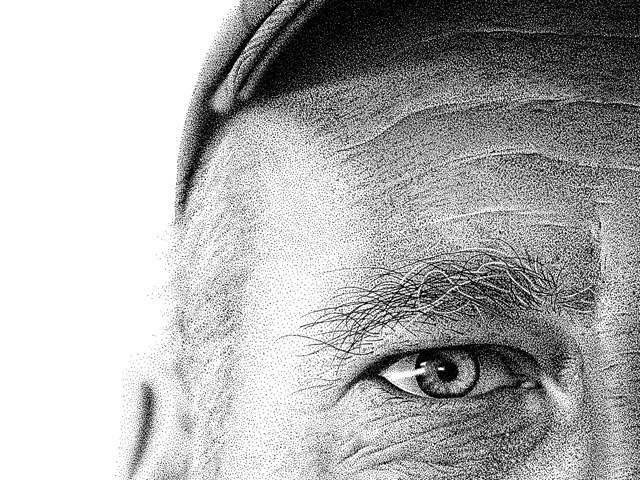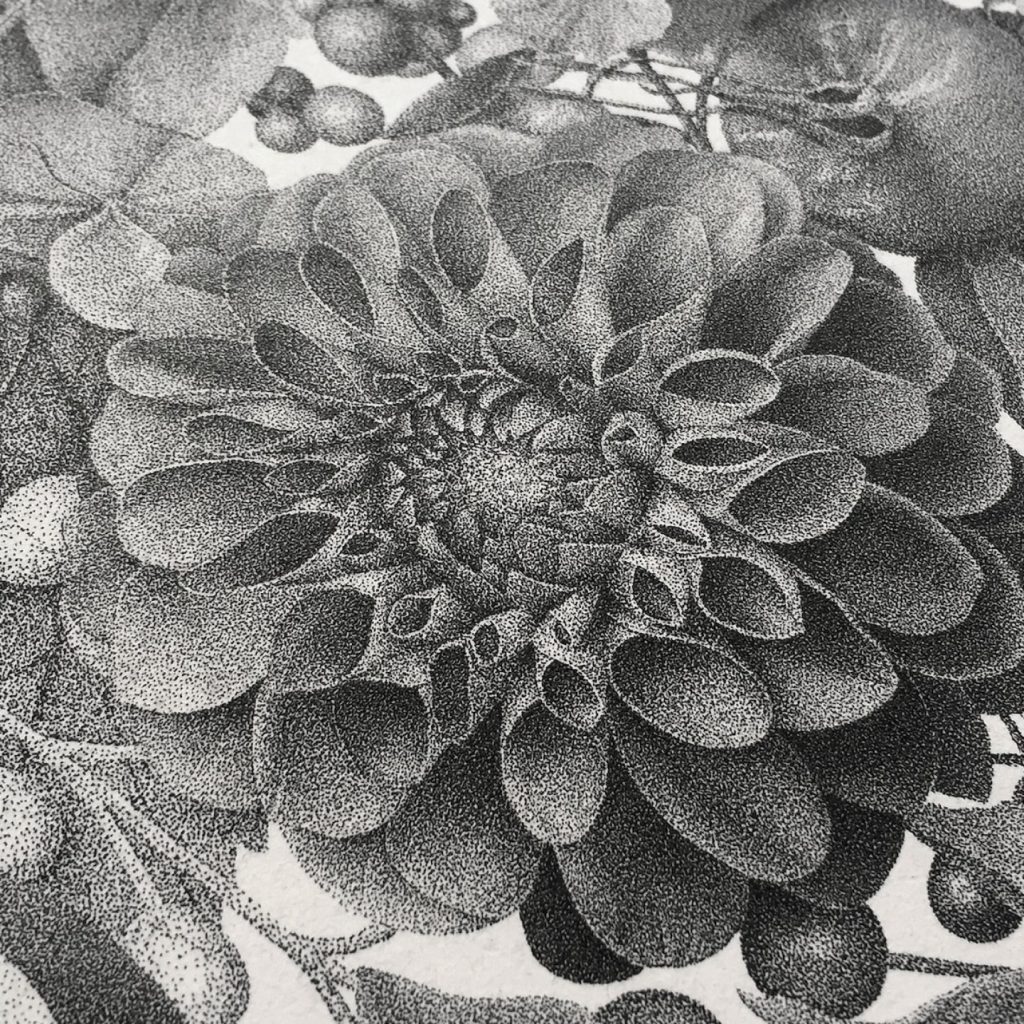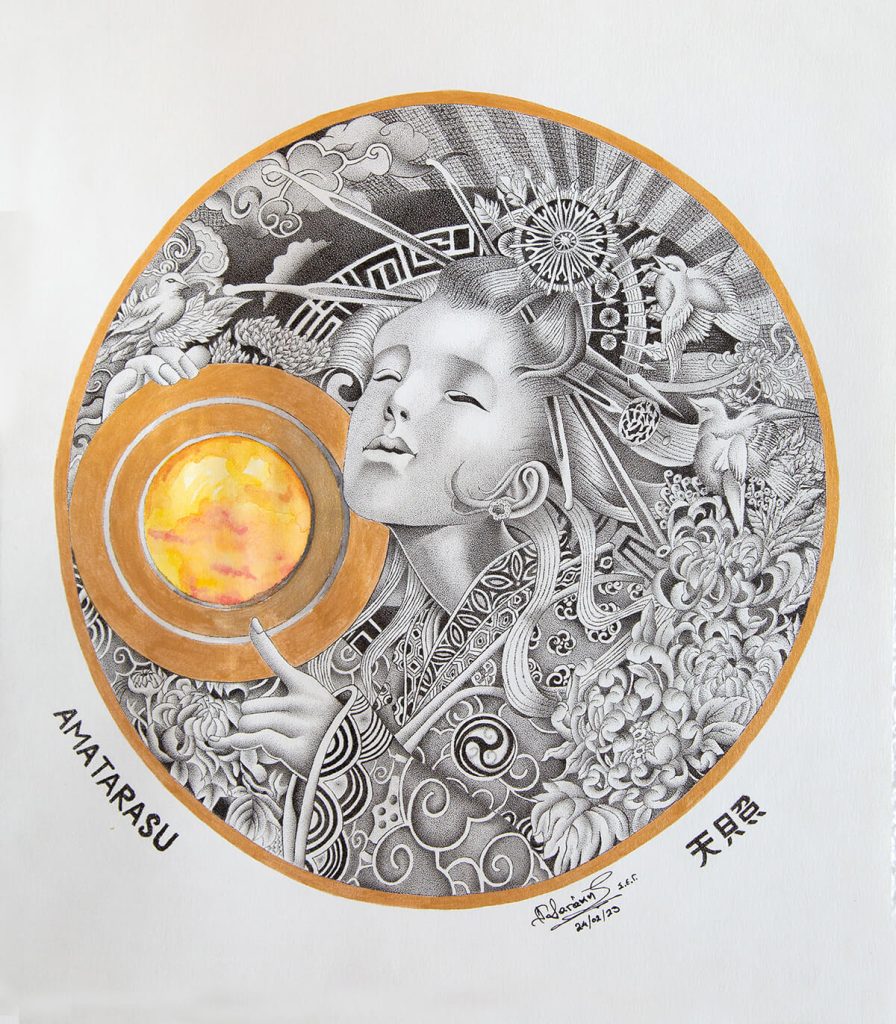Stippling is one of the successors of pointillism (in Greece the French term is partially Hellenized, so in Greek literature it is often referred to as “pouantigismos”); it is a technique in ink art that uses small dots to create images with depth and shading. Although this technique has been known for centuries, contemporary artists continue to innovate and push its boundaries.
Pointillism and stippling are similar yet distinct techniques. Pointillism is a painting technique developed in the late 19th century by artists such as Georges Seurat and Paul Signac. It uses small, distinct dots of pure color placed close together to form images. The color dots blend optically when viewed from a distance, creating more vivid and luminous colors. It is part of the neo-impressionist movement and is directly linked to color theory.
Stippling, on the other hand, is a shading technique mainly used in ink or pencil drawing and painting. It uses small dots to create shading and texture rather than pure color. The dots may be denser or more sparse depending on the desired effect of light and shadow. It is often used to emphasize detail and the morphology of the subject, mainly in black-and-white works. In summary, pointillism focuses on the use of color, while stippling is primarily used for shading and texture.
One of the most significant innovations in stippling is the use of colored inks. Traditionally, stippling is done with black or brown ink, but modern artists incorporate colored inks to create rich and dynamic images. This use of color allows for more vibrant and multidimensional compositions, adding a new level of complexity to the art.
The stippling technique has declined in popularity in the digital age. This decline is mainly due to the precise and time-consuming nature of stippling works, which makes them difficult to sell to a broad audience, especially when compared to cheaper and faster digital prints. The digitization of art enables the reproduction and distribution of artworks on a large scale at a lower cost, making them more accessible to the general public. This technological advancement has led to a decrease in interest in traditional, handcrafted works that require significant time and skill, such as stippling.
However, there is a counterargument to this view. Many artists and critics argue that handcrafted stippling works have a unique value and aesthetic that cannot be digitally reproduced. The process of creating a stippling piece requires great patience and precision, which gives these works a distinct authenticity and artisanal quality. Furthermore, digital art has opened new avenues for stippling artists, allowing them to use digital tools to create and showcase their works on new platforms. This has led to a revival of interest in the technique, particularly among younger artists who combine traditional techniques with modern digital media.
Overall, while digital technology has negatively impacted the popularity of traditional stippling, it has also opened new opportunities for the evolution and renewal of this technique in the modern era.
In conclusion, innovations in stippling show how contemporary artists continue to explore and expand the boundaries of this traditional technique. By incorporating color, using new materials, and striving for realistic detail, these artists not only keep the technique alive but also evolve it, bringing it to the forefront of contemporary art.

Miguel Endara
One of the artists who stands out in stippling is Miguel Endara, who creates stunningly realistic portraits using millions of ink dots. The detail and precision in Endara’s work are impressive, making him one of the most influential artists in the stippling technique.
Xavier Casalta
Another artist who pushes the boundaries of stippling is Xavier Casalta, who creates intricate designs with ink dots. His approach combines detail and patience, resulting in works that require hundreds of hours to complete.


Dimitris Galanakis
In Greece, there are few artists who use stippling as their main medium of expression to create their works. One of the most well-known is Dimitris Galanakis, who uses stippling to create detailed and expressive pieces that require great patience and precision.






